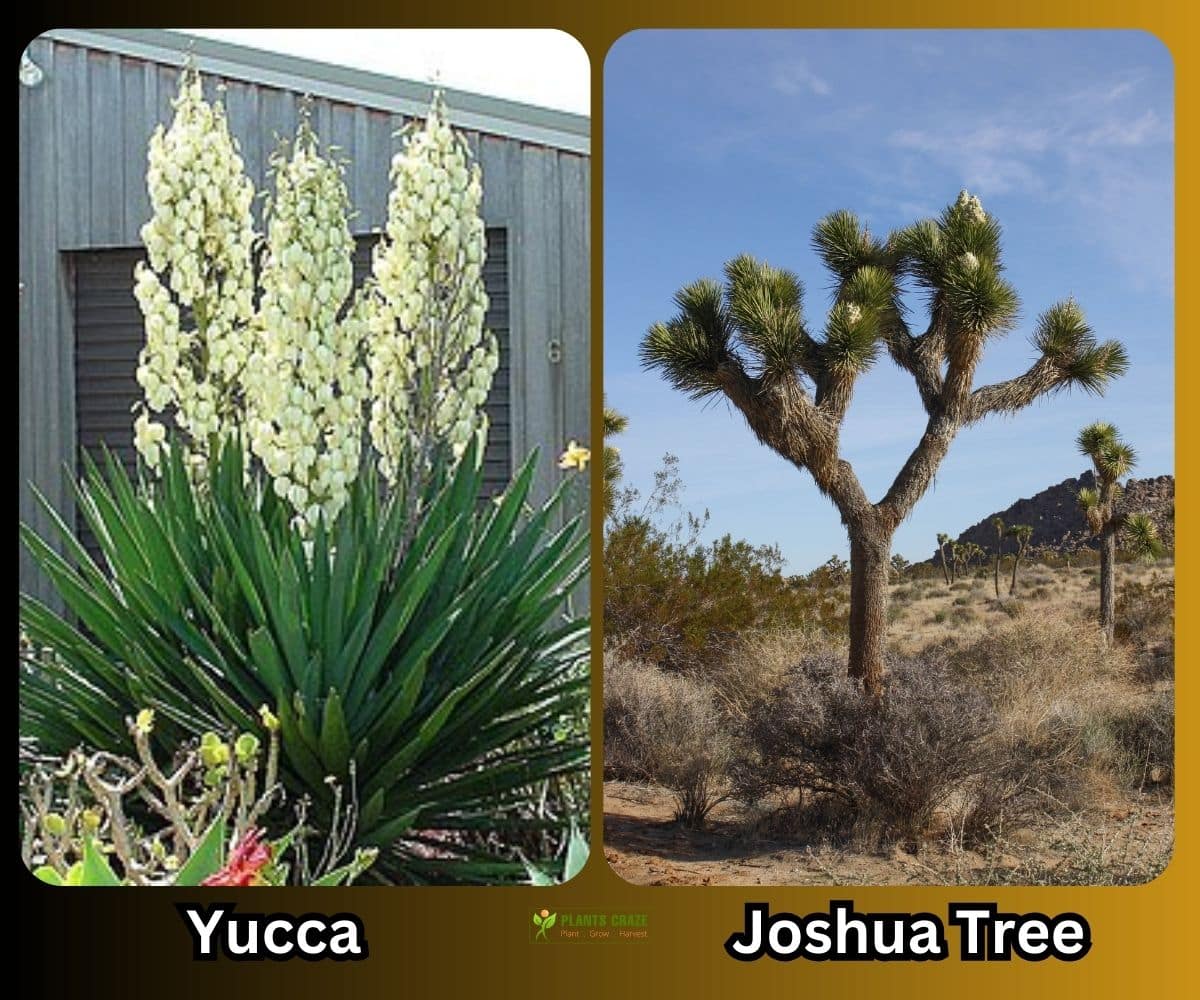While Yucca and Joshua Tree look similar at first glance, You must have a closer look comparing one vs another to reveal their actual differences.
Go through this entire article to know the potential difference between two desert succulents Yucca and Joshua Tree and choose the perfect one for your landscape.
Table of Contents Show
Yucca & Joshua Tree [Similarities]
Both Yucca and Joshua Tree belong to the Agavaceae family which includes many desert plants and succulents.

Therefore, both plants thrive in areas with rocky slopes and deserts like Mojave and Sonoran where drought is prevalent.
- Both are succulent plants with fleshy stems to store water for future use.
- The leaves of both plants are spiny to protect the plant from herbivores.
- Both plants are extremely hardy and can adapt to harsh climatic conditions.
- Moreover, the appearance of both plants is tree-like but not completely a tree.
- Both Yucca and Joshua trees bear beautiful blossoms from spring to summer.
- Additionally, the fragrance of the blossoms of both plants enhances during the night to attract pollinators.
- Both Yucca and Joshua trees hold cultural significance for the native people.
Yucca Vs. Joshua Tree [Differences]
While many people confuse the Joshua tree with Yucca, it is important to understand that Joshua and Yucca trees are not technically part of the same genus.
Some scientists have also given Joshua a separate category, Clistoyucca brevifolia.
1. Height
The yucca plant is comparatively shorter than the Joshua tree. An average Yucca tree grows at a height ranging from 5 to 30 feet.
In contrast, the Joshua tree grows very tall. A normal Joshua tree can reach a height ranging from 30 to 50 feet and sometimes about 80 feet tall.
2. Trunk
When you look at the Yucca tree closely, you can see multiple trunks arising from the base of the trunk. This makes the Yucca tree look heavier.
Meanwhile, the Joshua tree has a single trunk that contains multiple branches only on the top of the tree making it look crowny.
3. Leaves
Yucca bears long and thin leaves with smooth surfaces and serrated edges. The rough edges and the curling tips on the foliage make it look spiny.
In contrast, the leaves in Joshua tree are thicker and shorter than 1 foot. The leaves have stiff and smooth leaf edges with not leaf threads.
4. Flower
During spring to summer, the Yucca plant bears bell-shaped flowers with beautiful white petals at the tips of the branches.
Meanwhile, the blossoms in Joshua Tree are more like a cup. The petals are creamy white and arise in clumps in the individual stalks of the branch.
5. Fruit
After the white blossoms fade, the Yucca plant bears small fruits that look like a capsule. Inside the capsule, you can find black seeds.
In contrast, the fruits in the Joshua tree grow as elongated brown pods that have various splitting sections. The fruits have fleshy pulp which is sweet to taste.
From Editorial Team
Yucca Vs. Joshua: What To Choose For the Garden?
Both Yucca and Joshua Trees can beautify your garden with their astonishing look. However, if you live in a region where winter is harsh, choosing Yucca can be the perfect decision.
However, if you are a busy person and want a low-maintenance succulent to thrive in the region with a warm and dry climate, Joshua Tree can be the better option.
